Navigation auf uzh.ch
Navigation auf uzh.ch
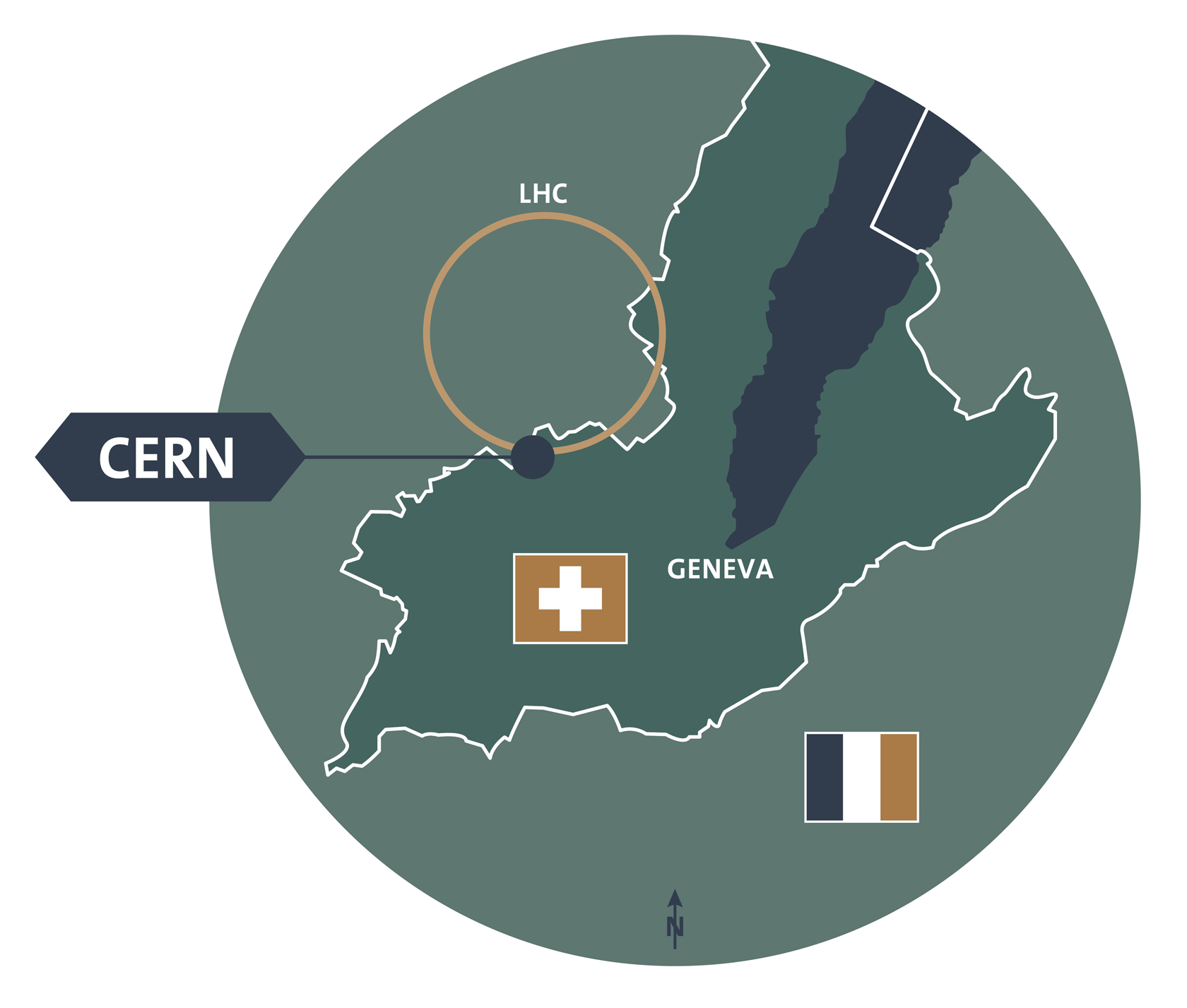
Why are there so many fundamental particles when ordinary matter is only made of a few of them? Why is there more matter than antimatter in the universe? What is dark matter made of? Why is gravity so weak? Are there other elementary particles waiting to be discovered? Even after the last predicted elementary particle, the Higgs boson, was recently observed, there are still many questions left unanswered. One of the primary facilities seeking answers is CERN.
CERN (Conseil Européen pour la Recherche Nucléaire) is a research organization that operates the Large Hadron Collider (LHC), the highest energy particle collider in the world. CERN is located near Geneva, Switzerland. The LHC is situated underground and crosses the Franco-Swiss border, It accelerates two high-energy particle beams travelling, at close to the speed of light, before colliding them in four different crossing points, which correspond to the positions of four experiments. University of Zurich research groups are involved in two of these experiments: CMS (Compact Muon Solenoid) and LHCb (Large Hadron Collider beauty).
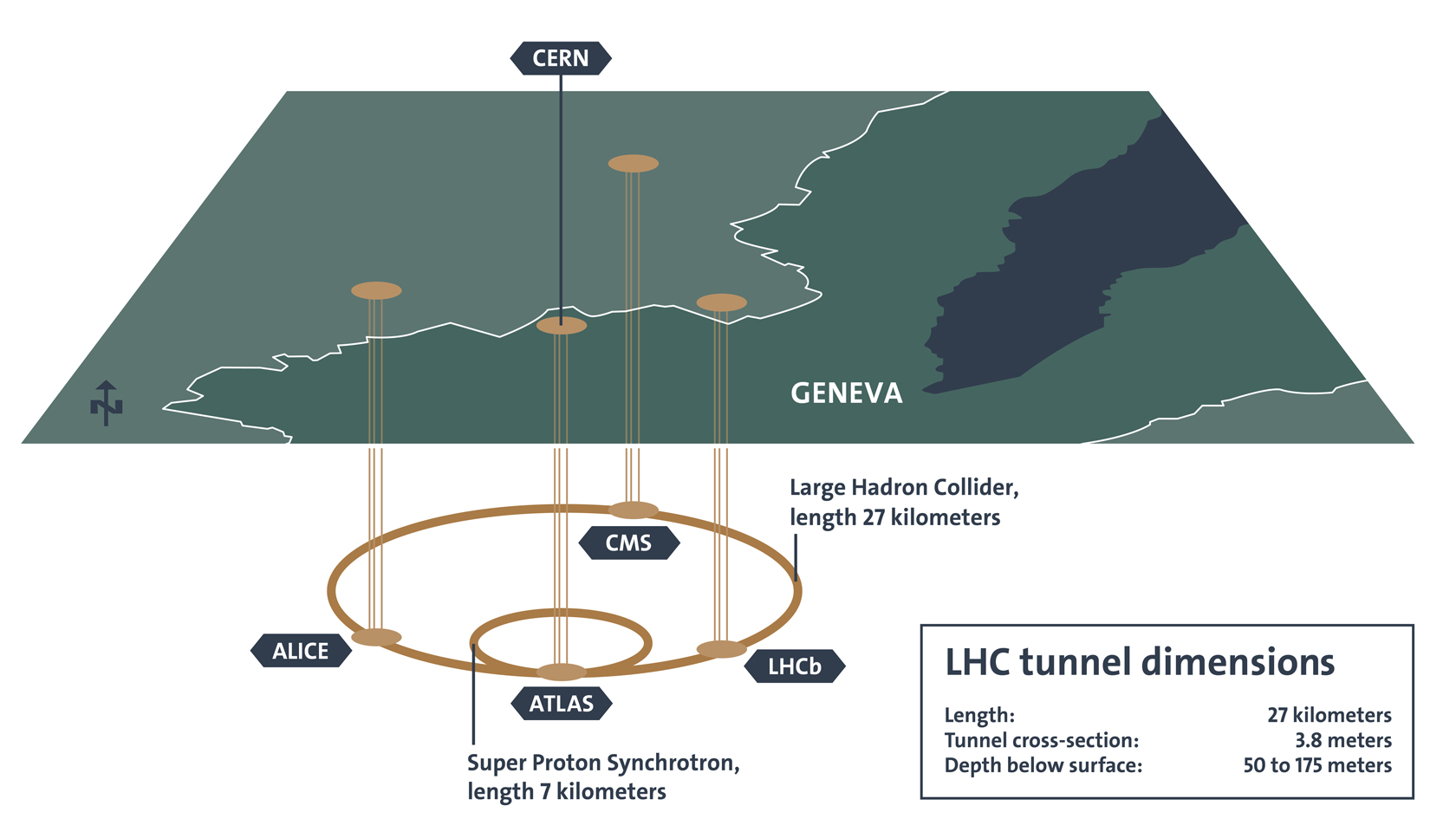
|
1953 |
CERN established |
|
1957 |
First particle accelerator at CERN commences operation |
|
1983 |
Detection of the W and Z bosons |
|
1989 |
Large Electron-Positron Collider (LEP) commences operation |
|
1990 |
The Large Hadron Collider (LHC) project is launched |
| 1994 | UZH joins the CMS experiment |
| 2000 | Construction of the LHC begins |
| 2008 | LHC begins colliding protons The ATLAS, ALICE, CMS, and LHCb experiments of the LHC begin collecting data to address fundamental physics questions. |
| 2012 | Detection of the Higgs boson by the ATLAS and CMS collaborations The 2013 Nobel Prize in Physics is awarded for the theoretical prediction of the Higgs boson. |
| 2017 | Replacement of the inner tracking detector of the CMS experiment The 66-megapixel tracker was replaced with a faster, lighter, 124-megapixel tracker that was partly developed at the UZH by Professors Florencia Canelli and Ben Kilminster. |
| 2018 - 2025 | Development of the next inner tracking detector of the CMS experiment The next inner tracker detector will have about 2 gigapixels, and features a large forward extension being developed and built by UZH and PSI. It will record data in the CMS detector from 2027 to 2040. |
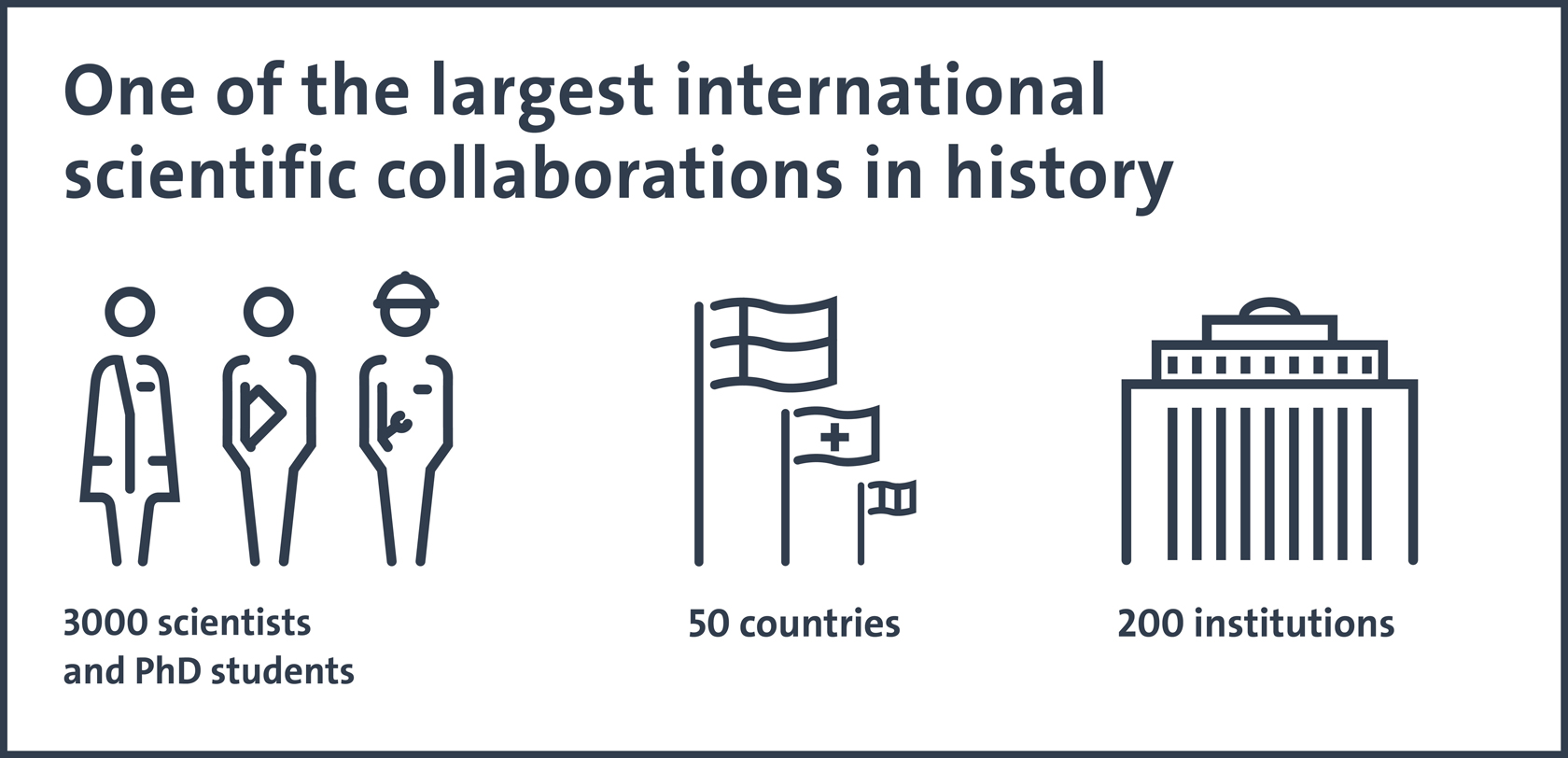
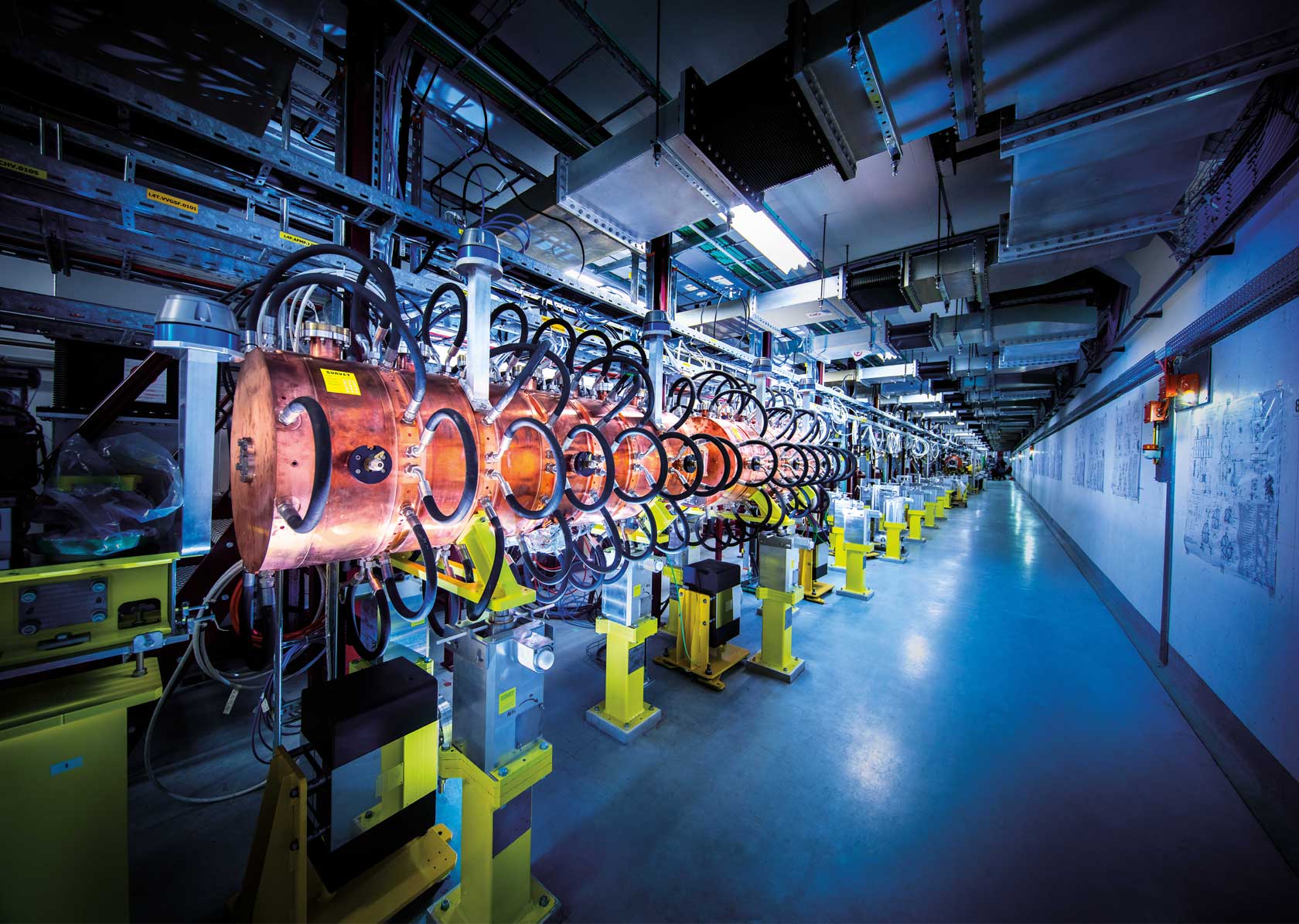
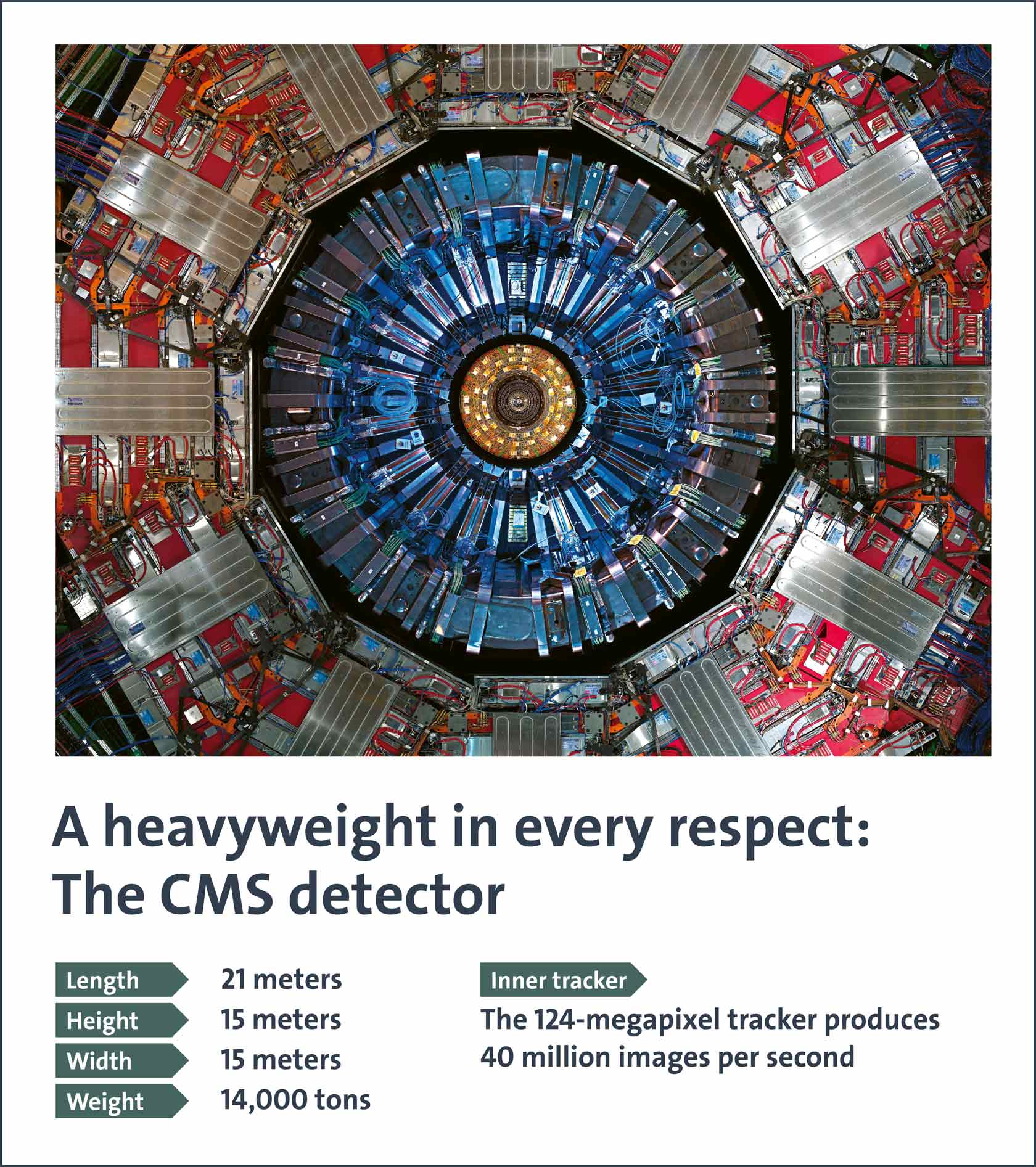
Using the Large Hadron Collider, physicists accelerate particles using radio-frequency cavities and bend these particles into circular orbits using superconducting magnets, steering them to collide with each other at specific points. Like the Big Bang at the beginning of the universe, the collisions momentarily produce unstable particles, which then decay into lighter particles via strong, electroweak and potentially unknown forces. These particles can leave signals in the CMS detector, enabling the energy and the paths of the particles to be measured. CMS researchers analyze these signals and thus can identify the particles that were originally produced in the collisions.
Learn more about the CMS detector:
How to control a beam of particles:
The next generation of CMS detector:
In 2012, the CMS and ATLAS collaborations discovered the Higgs boson, the last particle predicted by the Standard Model. Its existence confirms the theory developed in the 1960s that explains how particles acquire mass. Despite the amazing predictive power of the Standard Model, it has notable shortcomings. For instance, it does not explain dark matter, the imbalance of matter over anti-matter, the relative strengths of the forces, and the existence of superfluous copies of matter particles, only one of which, the top quark, interacts strongly with the Higgs boson. CMS is designed to detect new particles and interactions that can shed light on these unknowns and to test the theory of the Standard Model with an unprecedented precision.
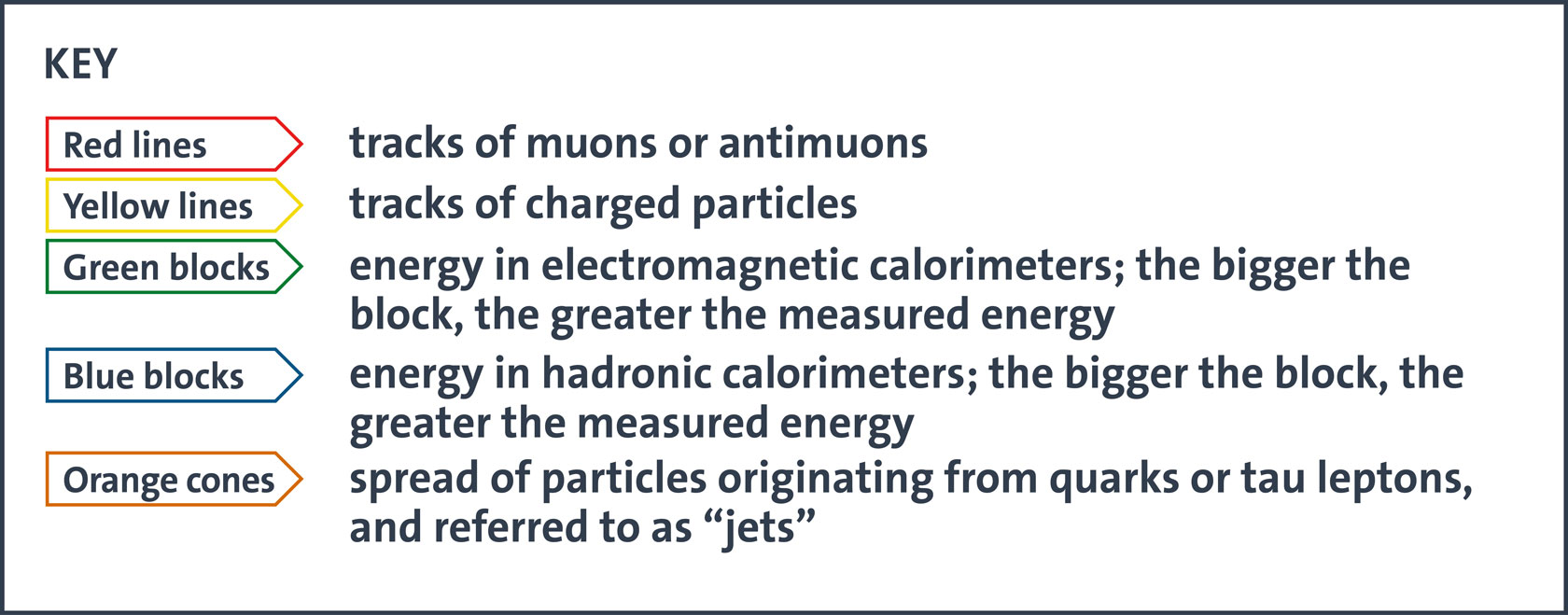
The following images show various events recorded by the CMS detector. They are candidates for events in which Higgs bosons, top quarks, or hypothetical new particles are produced. These particles have an extremely short lifespan and can only be detected through the products of their decay.
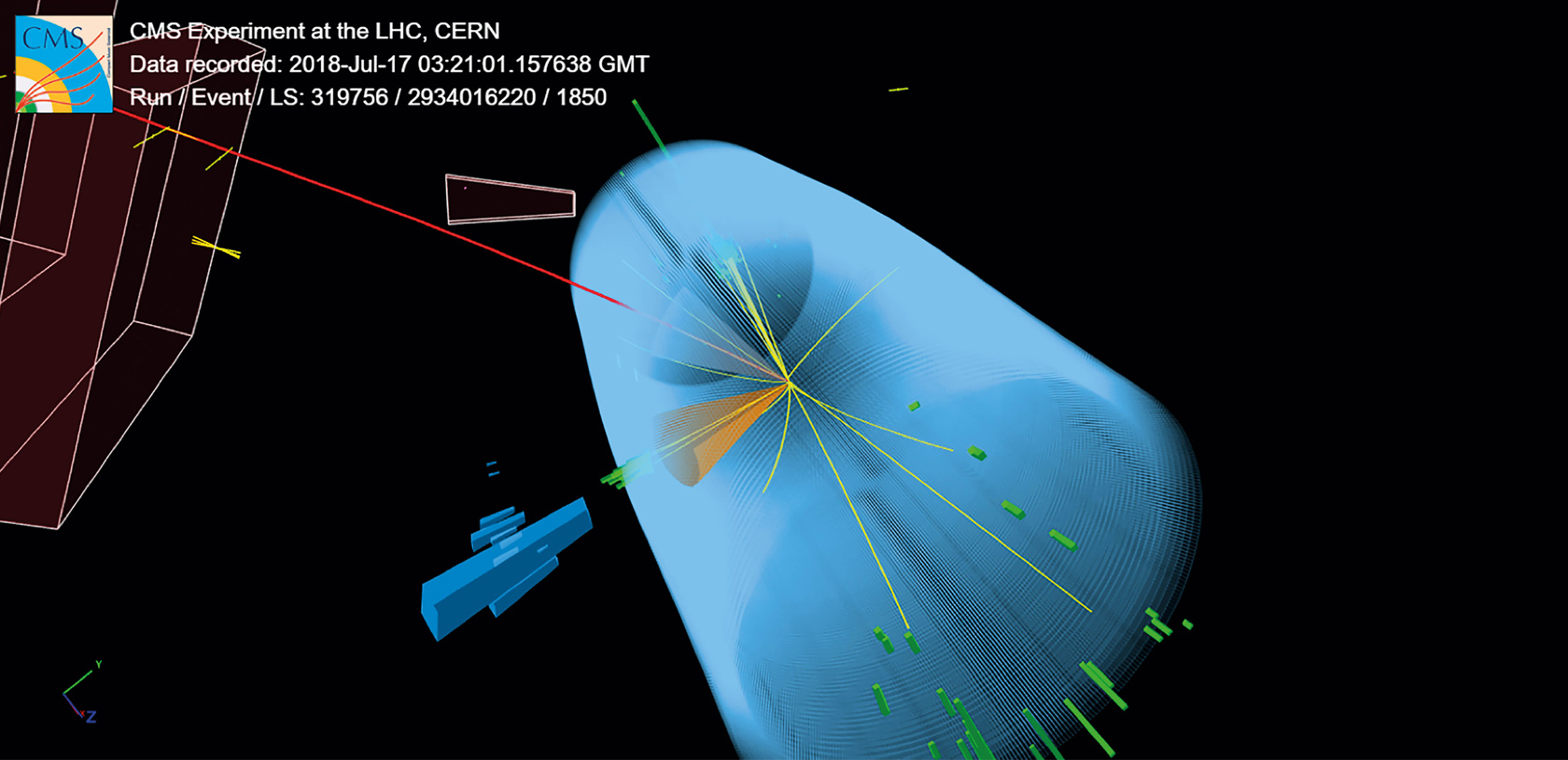
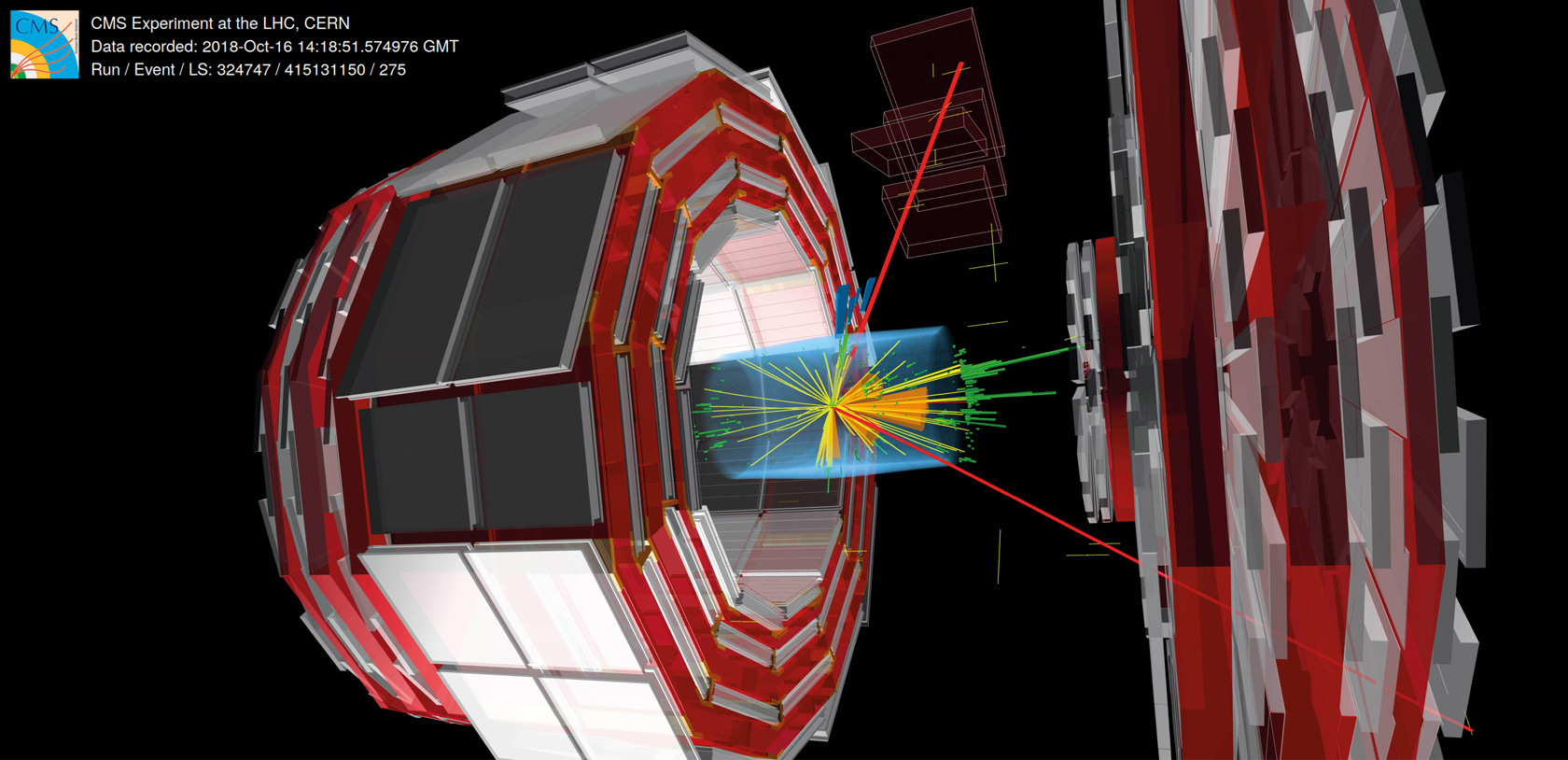
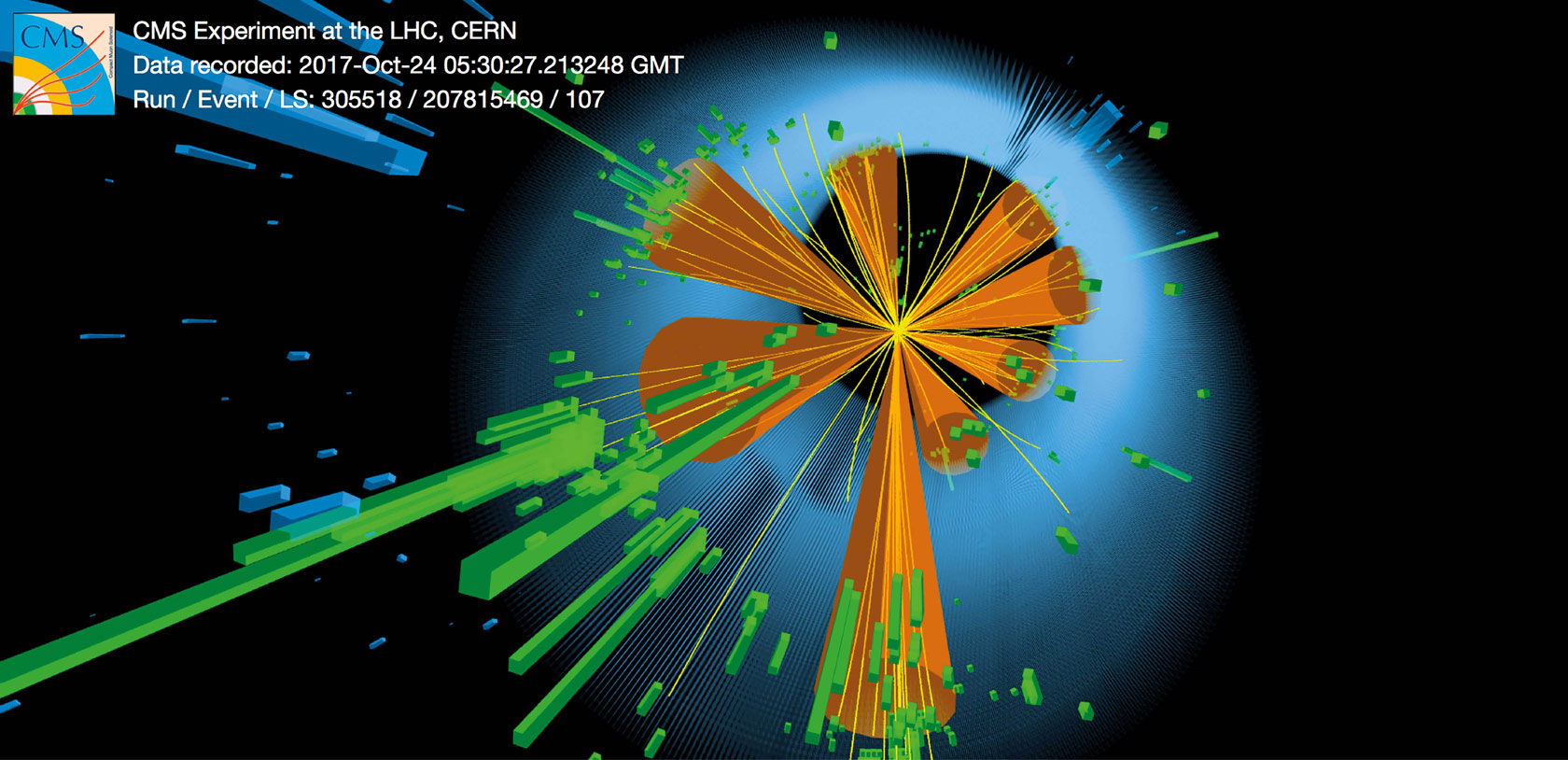
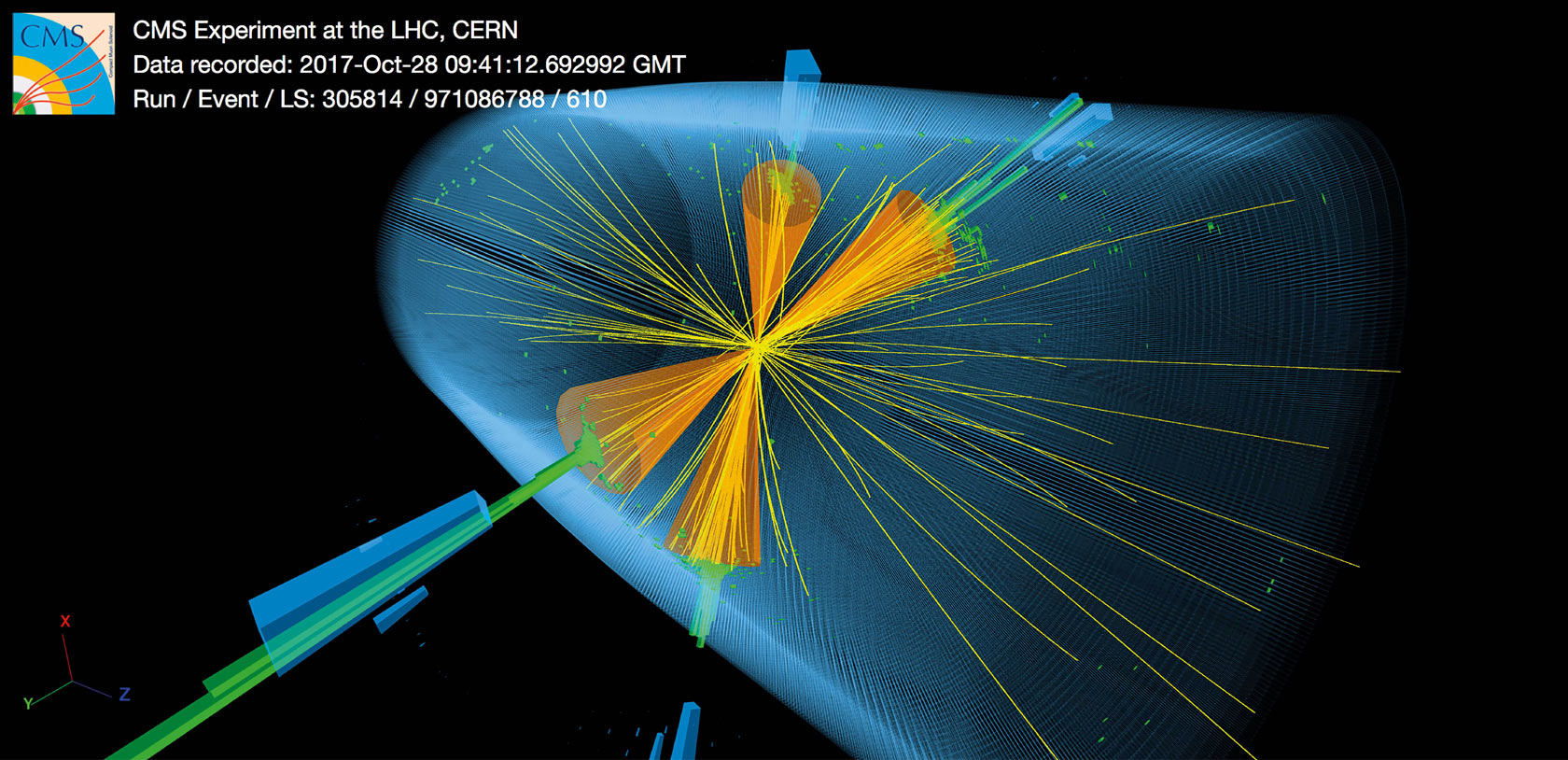
Research groups from the University of Zurich are involved in various experiments at CERN: Florencia Canelli, Lea Caminada, and Ben Kilminster are conducting research on the CMS experiment, and Nico Serra and Olaf Steinkamp at the LHCb experiment. In parallel, they are also proposing new experiments beyond the timescale of the LHC.
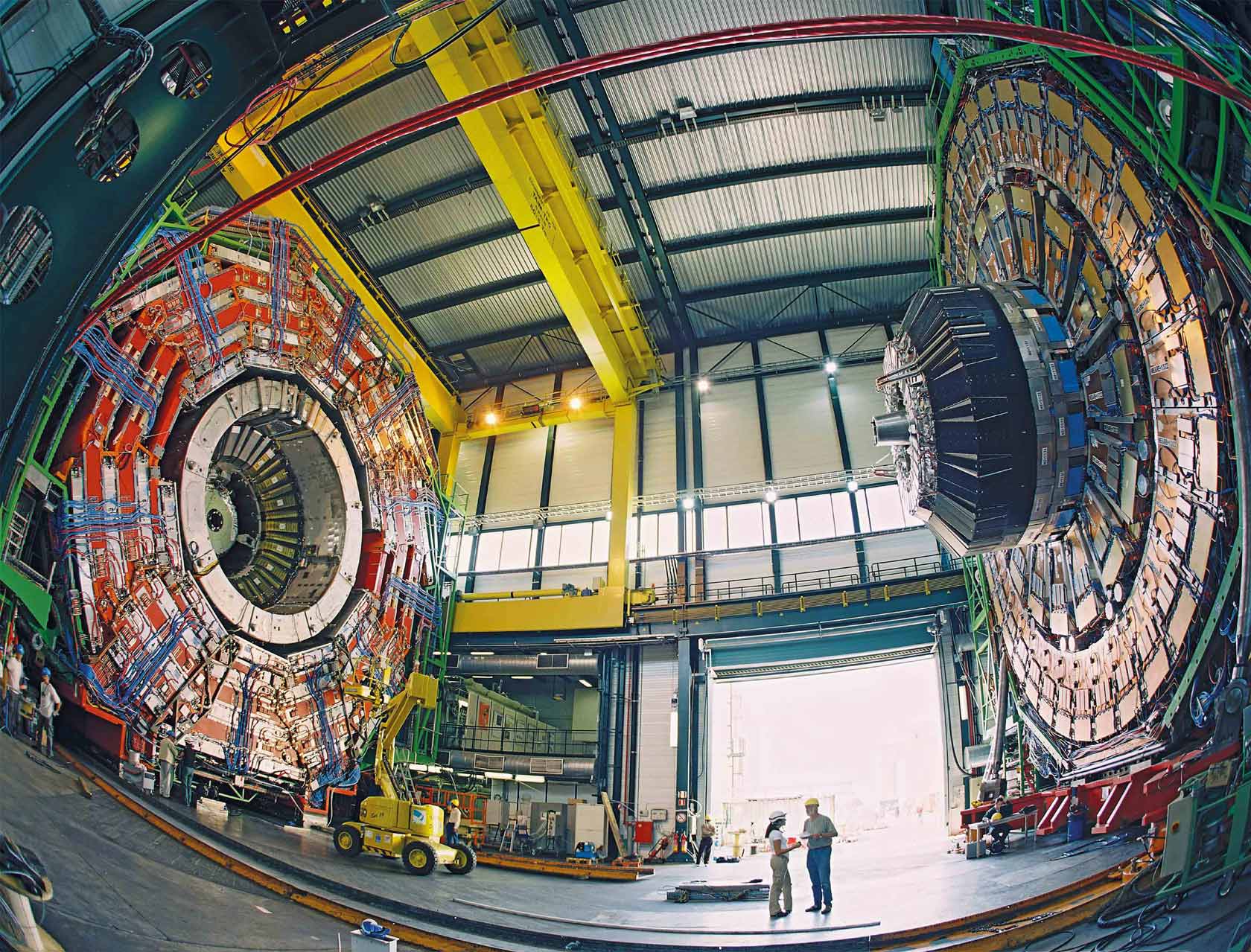
LONG YEARS OF RESEARCH FOR A BRIEF MOMENT:
AN EXPERIMENT WRITES HISTORY
The Higgs boson was detected by the CMS collaboration in 2012. Higgs bosons produced in the accelerator exist for just 0,00000000000000000000016 seconds,
which we write as 1.6 x 10-22 seconds.
The LHC has been designed with a plan for long-term exploration. CMS will operate for at least another two decades while undergoing a steady evolution over time. New sub-detectors are being designed and manufactured. Groups at the University of Zurich are developing a central component of the next silicon tracking detector that will allow CMS to measure and search for particles that are produced closer to LHC beams. This will then be installed in the next phase of the CMS experiment, which will record data from 2027 to 2040.
Studies are currently underway at CERN for a new particle collider, with a tunnel three times longer than the LHC. This new collider would provide precision measurements of the Higgs boson and test for the effects of physics beyond the Standard Model.
UZH physicists Florencia Canelli and Ben Kilminster develop and build key components of the inner tracking detector for the CMS experiment. Their research focuses on detecting new particles and interactions that could answer some of the open questions of fundamental physics.
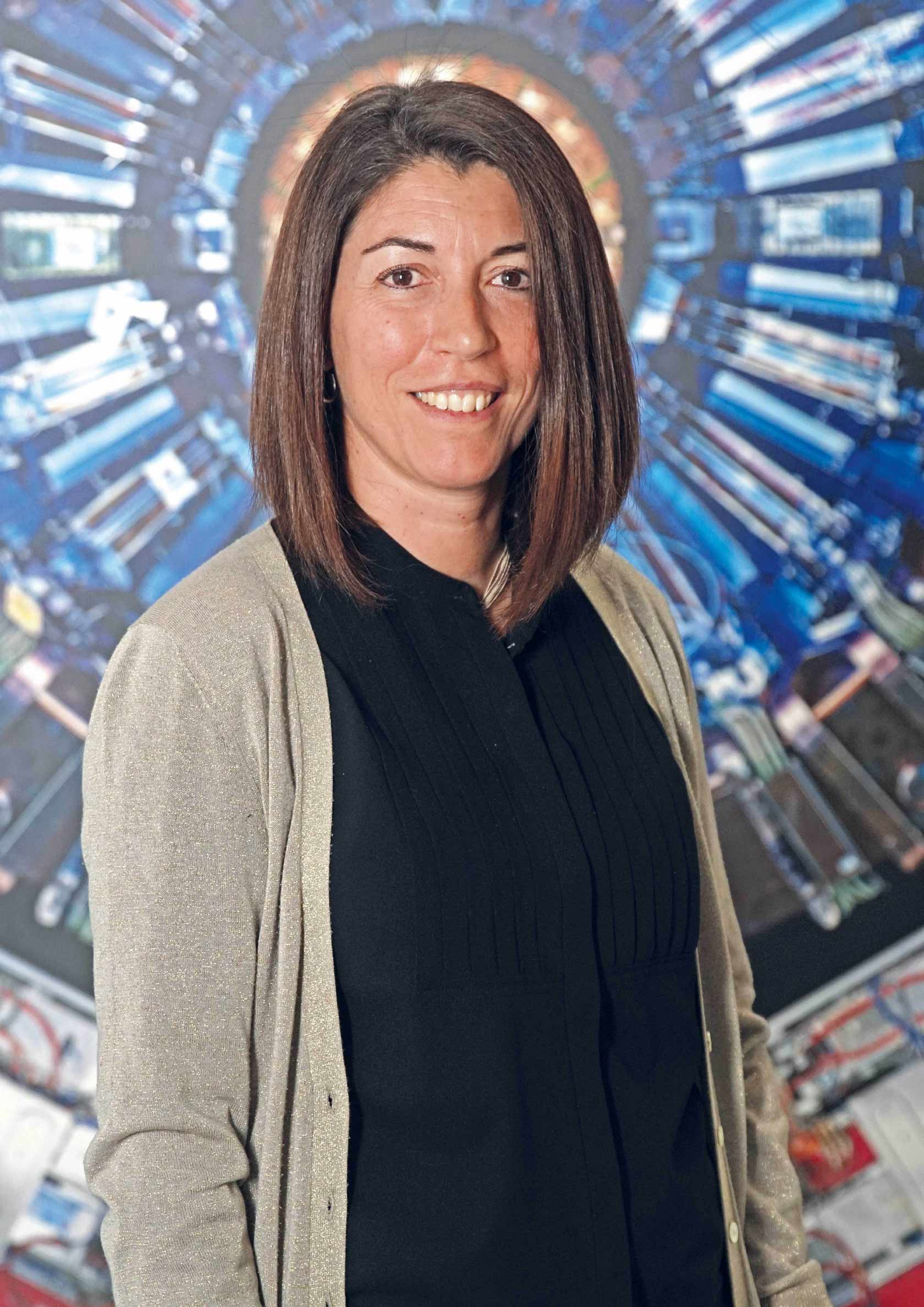
Prof. Florencia Canelli
Experimental particle physicist
Originally from Argentina,
working at the UZH since 2012
Video portrait of Prof. Florencia Canelli:
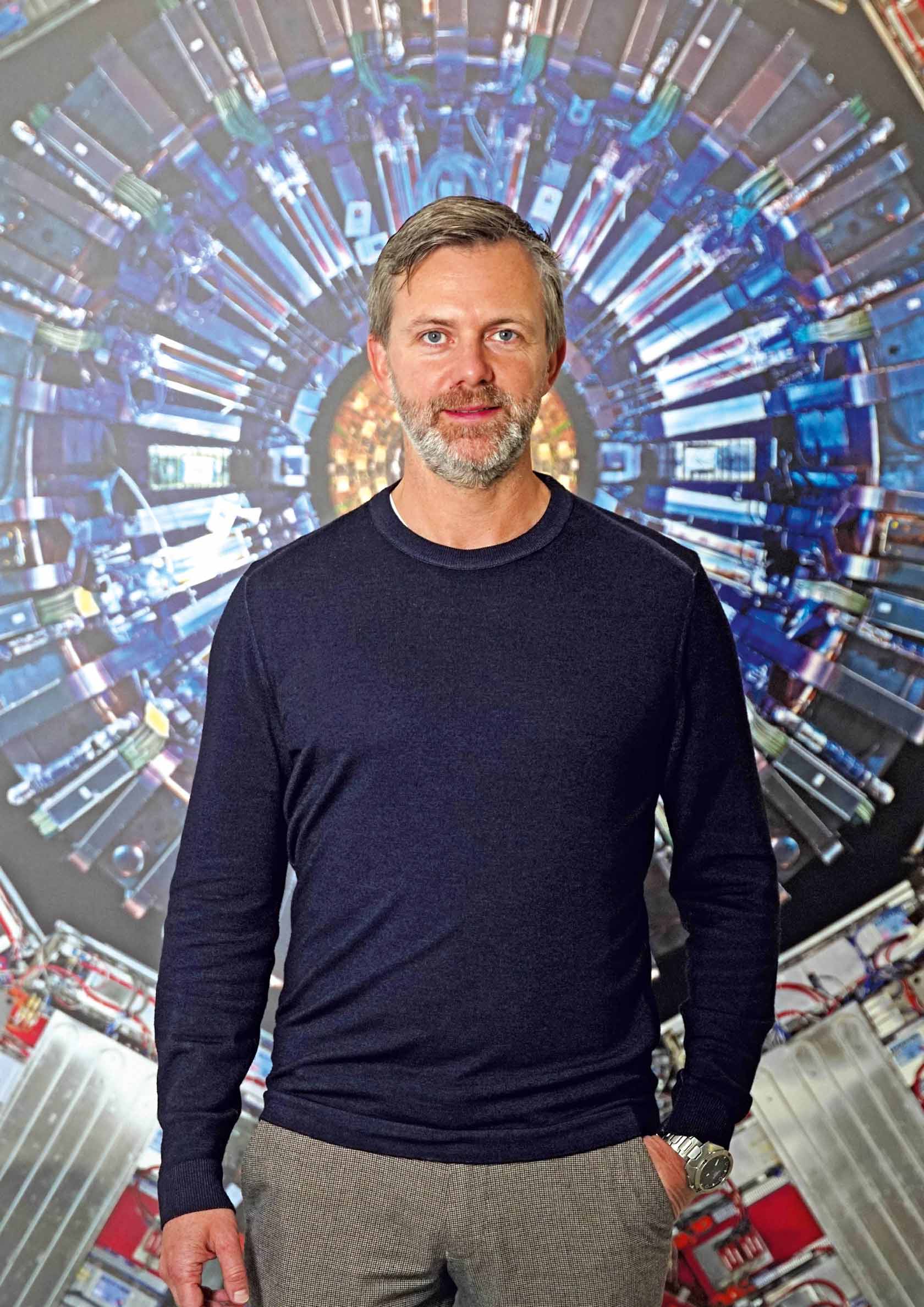
Prof. Ben Kilminster
Experimental particle physicist
originally from the USA and UK,
working at the UZH since 2012
Video portrait of Prof. Ben Kilminster: